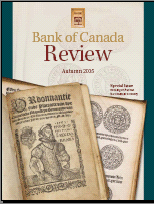Bank of Canada Review - Autumn 2005
Available as:
PDF
Cover page
Ready References
The book is part of the National Currency Collection, Bank of Canada.
Photography by Gord Carter, Ottawa.
